This experiment is for advanced students. Here is another way to detect cosmic rays, only this time you’ll actually see the thin, threadlike vapor trails appear and disappear. These cobwebby trails are left by the particles within minutes of creating the detector. (Be sure to complete the Cosmic Ray Detector first!)
In space, there are powerful explosions (supernovas) and rapidly-spinning neutron stars (pulsars), both of which spew out high energy particles that zoom near the speed of light. Tons of these particles zip through our atmosphere each day. There are three types of particles: alpha, beta, and gamma.
Did you know that your household smoke alarm emits alpha particles? There’s a small bit (around 1/5000th of a gram) of Americium-241, which emits an alpha particle onto a detector. As long as the detector sees the alpha particle, the smoke alarm stays quiet. However, since alpha particles are easy to block, when smoke gets in the way and blocks the alpha particles from reaching the detector, you hear the smoke alarm scream.
[am4show have=’p9;p44;’ guest_error=’Guest error message’ user_error=’User error message’ ]
Alpha particles are actually high speed helium nuclei (which is two protons and two neutrons stuck together). They were named long before we knew what they were of, and the name stuck. Alpha particles are pretty heavy and slow, and most get stopped by just about anything, a sheet of paper or your skin. Because of this, alpha particles are not something people get excited about, unless you actually eat the smoke detector.
Both brick buildings as well as people emit beta particles. Beta particles are actually high speed electrons or positrons (a positron is the antimatter counterpart to the electron), and they are quick, fast, and light. You can stop a beta particle by holding up a thin sheet of plastic or tinfoil.
When you hold the jar in your hands, you warm it slightly and cause the air inside to get saturated with alcohol vapor. When the alpha particles (cosmic rays) zip through this portion of the jar, they quickly condense the alcohol and create spider-webby vapor trails. Try using a magnet to deflect the cosmic rays.
Here’s what you need:
- rubbing alcohol
- clean glass jar
- black felt
- hot glue gun
- magnet
- flashlight
- scissors
- dry ice and heavy gloves for handling the dry ice (and adult help)
Download Student Worksheet & Exercises
You will be making a special cloud chamber that holds alcohol gas inside. When you hold the jar in your hands, you warm it slightly and cause the air inside to get saturated with alcohol vapor. When the alpha particles (cosmic rays) zip through this portion of the jar, they quickly condense the alcohol and create spider-webby vapor trails. Kind of like when a jet flies through the air – you can’t always see the jet, but the cloud vapor trails streaming out behind stay visible for a long time. In our case, the vapor trails are visible for only a couple of seconds.
- Cut your felt to the size of the bottom of your jar. Glue the felt to the bottom of the jar.
- Cut out another felt circle the size of the lid and glue it to the inside surface of the lid.
- Cut a third felt piece, about 2 inches wide, and line the inside circumference of the jar, connecting it with the bottom felt. Glue it into place.
- Strap goggles on your face. No exceptions.
- Very carefully pour a tablespoon or two of the highest concentration of rubbing alcohol onto the felt in the jar. You don’t need much. Swirl it around to distribute it evenly. Do the same for the lid. All the felt pieces should be thoroughly saturated. Cap the jar and leave it for ten minutes while you explain about dry ice (see safety precautions above under Important Project Considerations.
- Your teacher is coming around with the dry ice. Remove the lid and your teacher will place a small piece of dry ice right on the lid. Invert the jar right over the lid. Leave the jar upside down.
- DO NOT SCREW ON THE CAP TIGHTLY! Leave it loose to allow the pressure to escape.
- Sit and wait and watch carefully for the tiny, thin, threadlike vapor trails.
- What do you think the magnet is for? (Hint: Keep it outside the jar.)
What’s Going On?
Cosmic rays have a positive charge, as the particles are usually protons, though one in every 100 is an electron (which has a negative charge) or a muon (also a negative charge, but 200 times heavier than an electron). On a good day, your cosmic ray indicator will blip every 4-5 seconds. These galactic cosmic rays are one of the most important problems for interplanetary travel by crewed spacecraft.
Most cosmic rays zoom to us from extrasolar sources (stars that are outside our solar system but inside our galaxy) such as high-energy pulsars, grazing black holes, and exploding stars (supernovae). We’re still figuring out whether some cosmic rays started from outside our own galaxy. If they are from outside our galaxy, it means that we’re getting stuff from quasars and radio galaxies, too!
Cosmic rays are fast-moving, high-energy, charged particles. The particles can be electrons, protons, the nucleus of a helium atom, or something else. In our case, the cosmic rays we’re detecting are “alpha particles.” Alpha particles are actually high-speed helium nuclei (helium nuclei are two protons and two neutrons stuck together). They were named “alpha particles” long before we knew what they were made of, and the name just kind of stuck.
Did you know that your household smoke alarm emits alpha particles? Most smoke detectors contain a small bit (around 1/5,000th of a gram) of Americium-241, which emits an alpha particle onto a detector. As long as the detector sees the alpha particle, the smoke alarm stays quiet. However, since alpha particles are easy to block, when smoke gets in the way and blocks the alpha particles from reaching the detector, you hear the smoke alarm scream.
Alpha particles are pretty heavy and slow, and most get stopped by just about anything, like a sheet of paper or your skin. Because of this, alpha particles are not something people get very excited about, unless you actually eat the smoke detector and ingest the material (which is not recommended).
Both brick buildings as well as people emit beta particles. Beta particles are actually high-speed electrons or positrons (a positron is the antimatter counterpart to the electron), and they are quick, fast, and light. When an electron hit the foil ball, it traveled down and charged the foil leaves, which deflected a tiny bit inside the electroscope. A beta particle has a little more energy than an alpha particle, but you can still stop it in its tracks by holding up a thin sheet of plastic (like a cutting board) or tinfoil.
Important Project Considerations:
After creating your detector: You can bring your alpha particle detector near a smoke alarm, an old glow-in-the-dark watch dial or a Coleman lantern mantel. You can go on a hunt around your house to find where the particles are most concentrated. If you have trouble seeing the trails, try using a flashlight and shine it on the jar at an angle.
You will also be working with dry ice. The dry ice works with the alcohol to get the vapor inside the jar at just the right temperature so it will condense when hit with the particles. Note that you should NEVER TOUCH DRY ICE WITH YOUR BARE HANDS. Always use gloves and tongs and handle very carefully. Keep out of reach of children – the real danger is when kids think the ice is plain old water ice and pop it in their mouth.
If your dry ice comes in large blocks, the easiest way to break a large chunk of dry ice into smaller pieces is to insert your hands into heavy leather gloves, wrap the dry ice block in a few layers of towels, and hit with a hammer. Make sure you wrap the towels well enough so that when the dry ice shatters, it doesn’t spew pieces all over. Use a metal pie plate to hold the chunks while you’re working with them. Store unused dry ice in a paper bag in a cooler or the coldest part of the freezer. Dry ice freezes at -109 degrees Fahrenheit. Most freezers don’t get that cold, so expect your dry ice to disappear soon.
TIP: You can bring your alpha particle detector near a smoke alarm, an old glow-in-the-dark watch dial or a Coleman lantern mantel. You can go on a hunt around your house to find where the particles are most concentrated. If you have trouble seeing the trails, try using a flashlight and shine it right on the jar.
[/am4show]

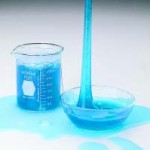 The most slippery substance on the planet, this dehydrated gel is a super-slippery, super long polymer chain of molecules that will actually climb up and out of your container if you don’t use a lid. This slime is sensitive to light, temperature, and concentration (the amount of water you use) so if yours isn’t very responsive, check those three things.
The most slippery substance on the planet, this dehydrated gel is a super-slippery, super long polymer chain of molecules that will actually climb up and out of your container if you don’t use a lid. This slime is sensitive to light, temperature, and concentration (the amount of water you use) so if yours isn’t very responsive, check those three things.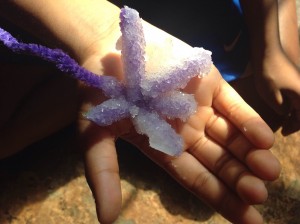
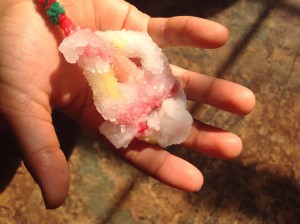
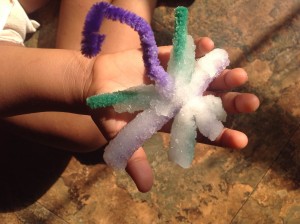
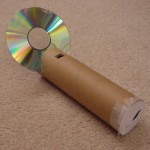 Spectrometers are used in chemistry and astronomy to measure light. In astronomy, we can find out about distant stars without ever traveling to them, because we can split the incoming light from the stars into their colors (or energies) and “read” what they are made up of (what gases they are burning) and thus determine their what they are made of. In this experiment, you’ll make a simple cardboard spectrometer that will be able to detect all kinds of interesting things!
Spectrometers are used in chemistry and astronomy to measure light. In astronomy, we can find out about distant stars without ever traveling to them, because we can split the incoming light from the stars into their colors (or energies) and “read” what they are made up of (what gases they are burning) and thus determine their what they are made of. In this experiment, you’ll make a simple cardboard spectrometer that will be able to detect all kinds of interesting things! Einstein received a Nobel Prize for figuring out what happens when you shine blue light on a sheet of metal. When he aimed a blue light on a metal plate, electrons shot off the surface. (Metals have electrons which are free to move around, which is why metals are electrically conductive. More on this in Unit 10).
Einstein received a Nobel Prize for figuring out what happens when you shine blue light on a sheet of metal. When he aimed a blue light on a metal plate, electrons shot off the surface. (Metals have electrons which are free to move around, which is why metals are electrically conductive. More on this in Unit 10).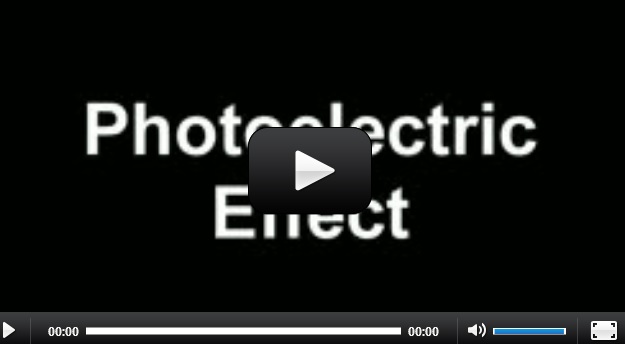

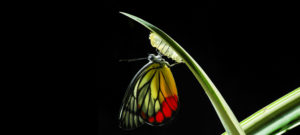



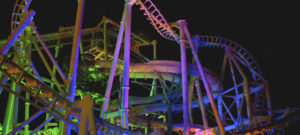

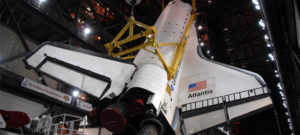
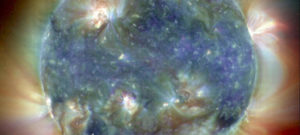
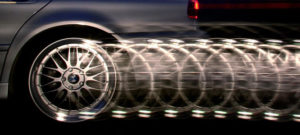


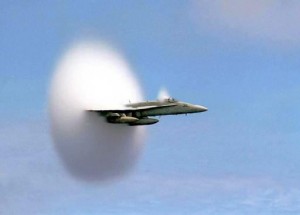 The image shown here is a real picture of an aircraft as it breaks the sound barrier. This aircraft is passing the speed at which sounds travel. The white cloud you see in the photo is related to the shock waves that are forming around the craft as it moves into supersonic speeds. Because the aircraft is moving through air, which is a gas, the gas can compress and results in a shock wave.
The image shown here is a real picture of an aircraft as it breaks the sound barrier. This aircraft is passing the speed at which sounds travel. The white cloud you see in the photo is related to the shock waves that are forming around the craft as it moves into supersonic speeds. Because the aircraft is moving through air, which is a gas, the gas can compress and results in a shock wave. If you’ve ever owned a fish tank, you know that you need a filter with a pump. Other than cleaning out the fish poop, why else do you need a filter? (Hint: think about a glass of water next to your bed. Does it taste different the next day?)
If you’ve ever owned a fish tank, you know that you need a filter with a pump. Other than cleaning out the fish poop, why else do you need a filter? (Hint: think about a glass of water next to your bed. Does it taste different the next day?)